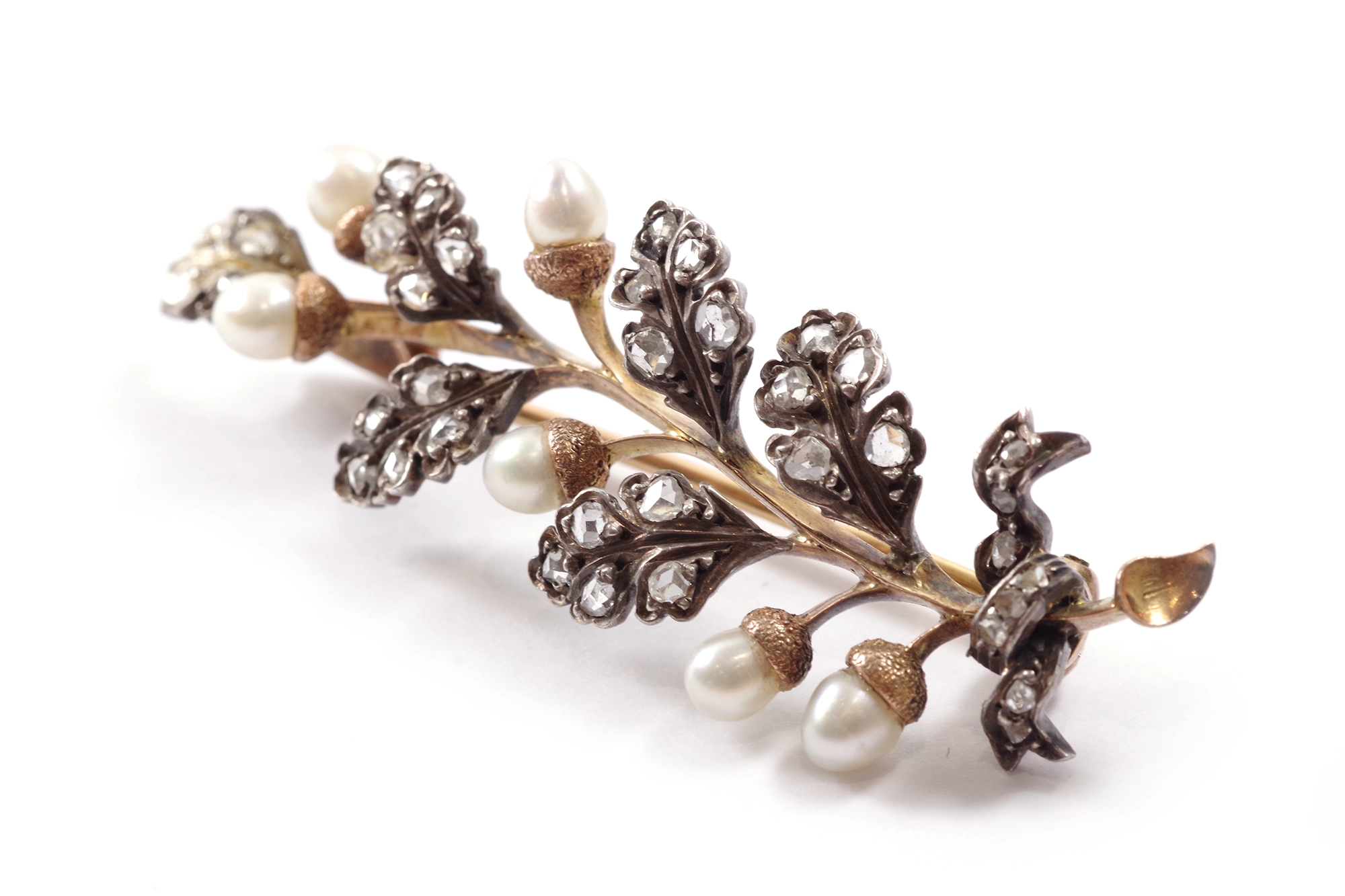
Pearls have been treasured for their timeless beauty and symbolism for centuries. Two types of real pearls dominate the antique jewelry and jewelry markets: fine/natural pearls and cultured pearls. Although they share a superficial resemblance, there are significant differences between them. In this article, we will examine the key characteristics that allow you to distinguish a genuine fine pearl from a cultured pearl.
The origins of pearls
Origin and definition of fine pearls
The fundamental distinction between the two types of pearls lies in their origin. Fine pearls are organic gems, also called natural pearls, that occur naturally in pearl-producing mollusks, most commonly in oysters or mussels (bivalves, gastropods, cephalopods). Fine pearls are, by definition, very rare because there is no replenishing stock, and the fishing areas are tightly controlled, with many species protected to prevent their scarcity or, worse, extinction.
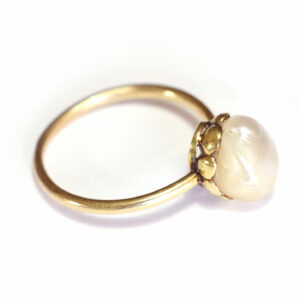
Natural pearls form on rare occasions: the mollusk undergoes a shock, intrusion of a parasite, a virus, etc. This event causes the displacement of cells in the “mantle,” which can multiply and form what is called the “pearl sac.” These cells then generate nacre in successive, concentric layers. Thus, a natural pearl is created and continues to grow until it is “coughed up” by the mollusk, meaning it is expelled into the water.
Fine pearls are primarily found in the Gulf of Bahrain, Sri Lanka (formerly Ceylon), and Central and North America. In France, fine pearls from the Vologne were harvested until the 19th century. They often had a milky white color but could also be pink, purple, gray, bluish, and even reddish.
Origin and definition of cultured pearls
Cultured pearls are organic gems that are artificially created in pearl-producing mollusks, frequently in oysters and mussels (bivalves and gastropods). Cultured pearls are abundant in the market, representing 99.8% of the pearl market.
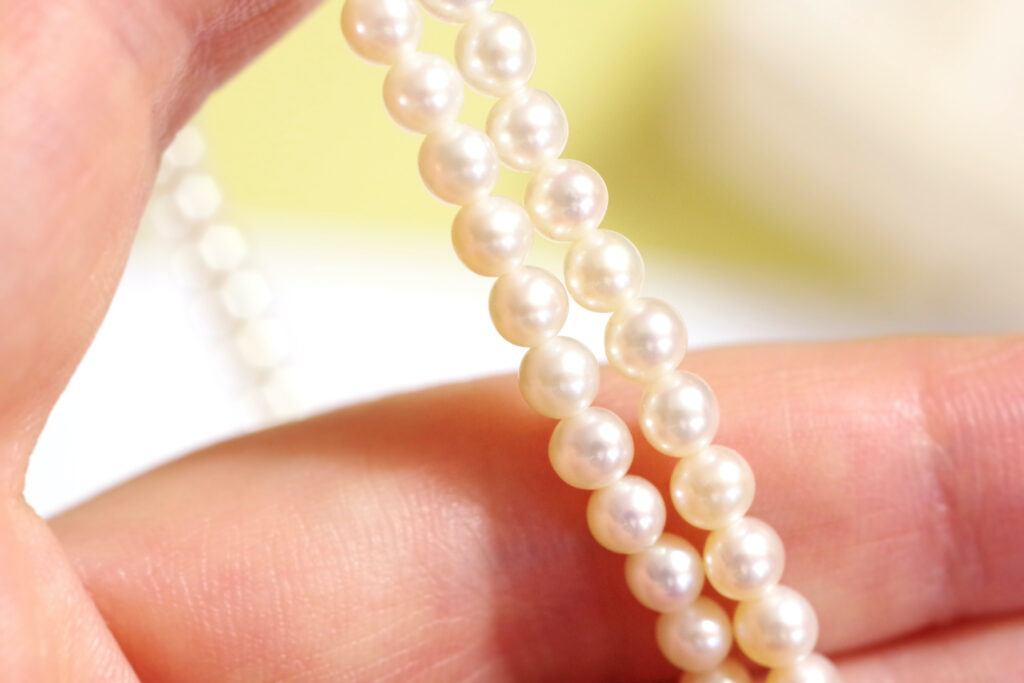
Cultured pearls are artificially created by the deliberate introduction of a graft into the gonad (reproductive organ) of the mollusk, with or without a “nucleus” (a bead made from a mussel shell). The cells from the grafted tissue will generate a “pearl sac” and produce a pearl. These operations are repeated several times on the same mollusk to obtain multiple cultured pearls.
The main pearl-producing countries are Japan, China, Australia, the Philippines, and French Polynesia.
Ways to Distinguish Fine Pearls from Cultured Pearls
The shape of the pearl
Natural pearls often have an irregular shape, rarely perfectly round, reflecting the natural model of their creation. In contrast, cultured pearls are generally round due to their human-controlled cultivation process.
Luster and orient
The “orient” of a pearl is the iridescent light effect produced when light plays between the successive layers of nacre. It can be imagined as the colors of a rainbow on a soap bubble. When it comes to a fine pearl, the orient is often deeper and more significant because light can penetrate deeper than in a cultured pearl (which has fewer nacre layers). Orient is one of the many aesthetic and quality attributes considered when evaluating and appreciating pearls.
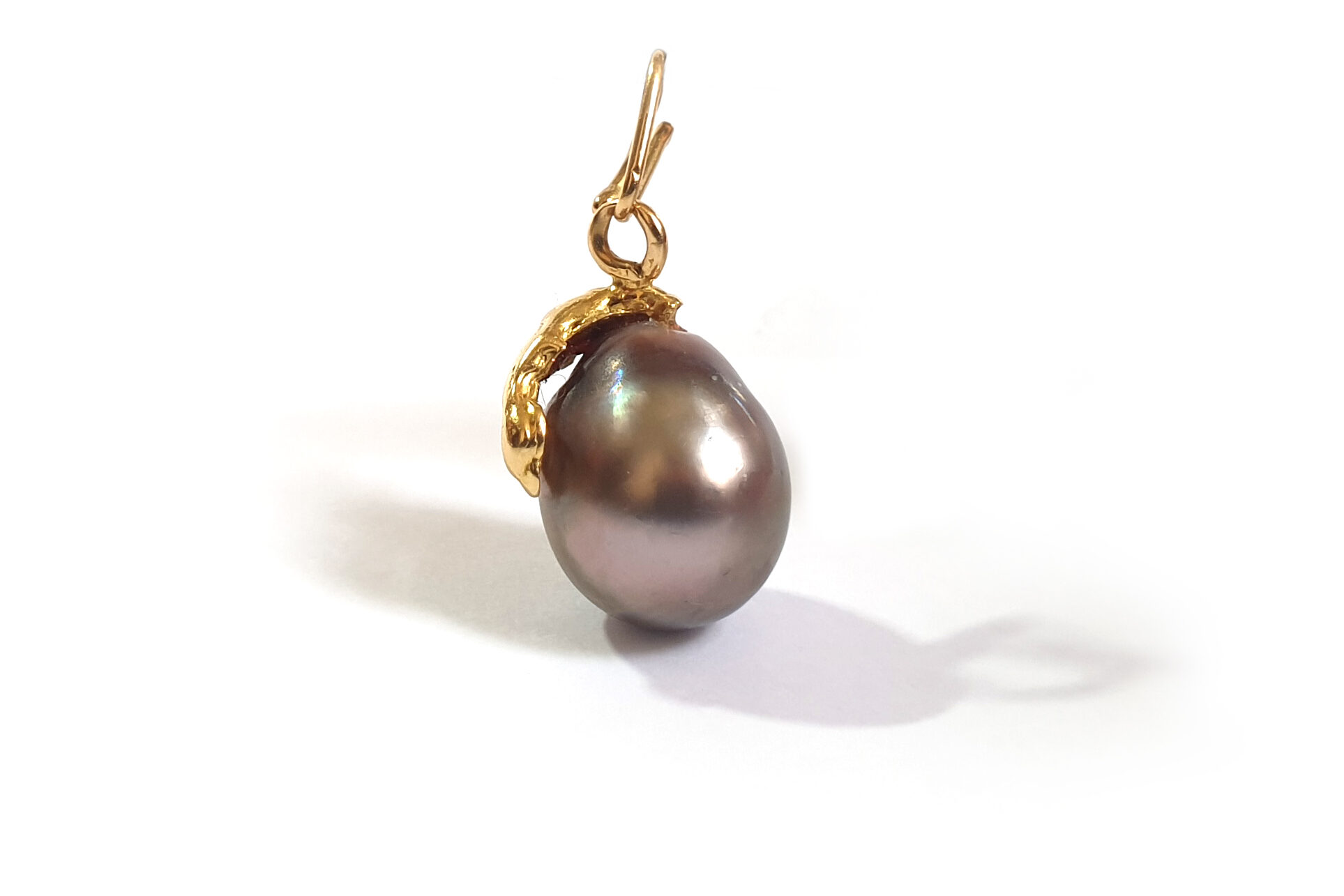
The “luster” of a fine pearl refers to the quality and intensity of its shine or brilliance. The luster of a pearl is determined by how light is reflected on its surface. High-quality fine pearls have luster often described as vivid, shiny, reflective, and deep. This is a crucial feature when assessing pearl quality. In contrast, cultured pearls have less deep and intense luster.
Surface and imperfections
Fine pearls may have minor imperfections, such as spots, surface irregularities, and slight roughness, due to their natural formation. In contrast, cultured pearls tend to have a smoother and more uniform surface, largely free of imperfections.
The value of a pearl
Due to their rarity and natural formation, fine pearls are generally much more expensive than cultured pearls. If the price of a pearl seems too good to be true, it is likely a cultured pearl.
Therefore, distinguishing a fine pearl from a cultured pearl requires attention to detail and an understanding of their distinct characteristics. Fine pearls embody the beauty and uniqueness of nature, while cultured pearls offer a more accessible alternative. In general, it can be particularly challenging to differentiate between the two, even for an expert and a gemologist. Depending on the size and weight of the pearl, it is advisable to send it to a laboratory for tests to analyze its nature (fine or cultured), origin (saltwater or freshwater), and obtain the actual weight and color of your pearl.
Caring for your pearl necklaces and other jewelry
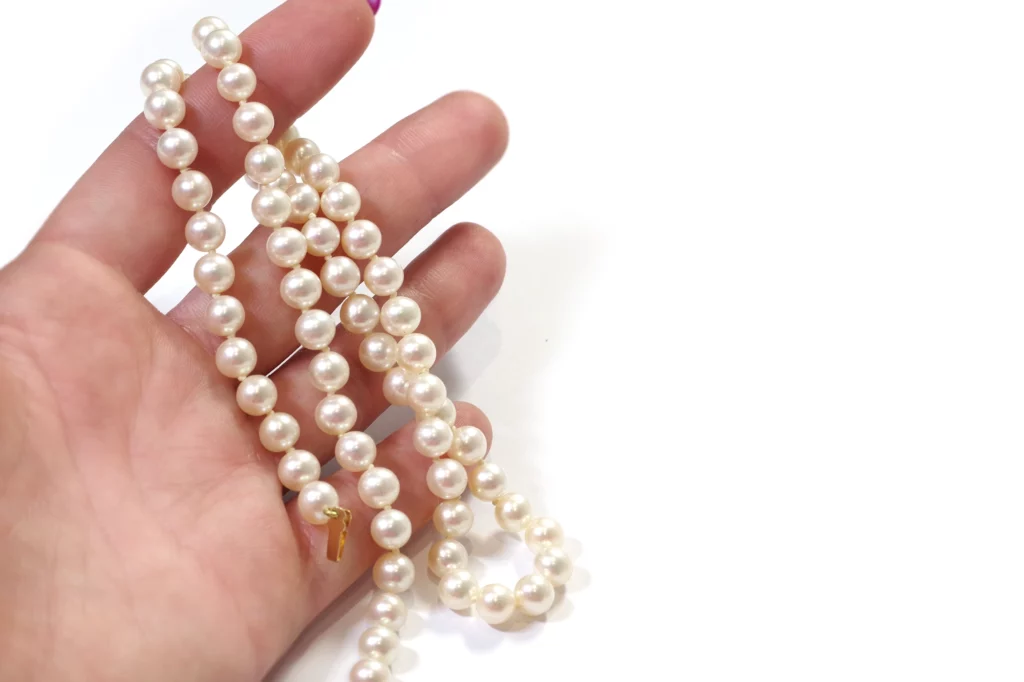
Antique pearl jewelry, whether made of cultured or natural pearls, requires proper care to preserve their beauty and luster over time. Here are some tips for maintaining your pearl jewelry:
- Avoid contact with chemicals such as perfumes, lotions, makeup, and hair products. Do not spray or apply these products directly onto your pearls.
- When dressing, put on your pearl jewelry last to avoid contact with cosmetic or skincare products.
- Clean them from time to time using a soft, damp cloth. Simply wipe them gently after wearing. Make sure to dry them thoroughly to prevent moisture from penetrating the silk thread.
- Store them properly and carefully, as pearls are sensitive to scratches. Store them separately from your other antique jewelry, preferably in a soft fabric pouch or a jewelry box.
- Wear your pearls frequently. The natural oils from your skin can help maintain the luster of the pearls.
- Handle your jewelry with care, as pearls are relatively fragile. Avoid bumping them against hard surfaces or dropping them.
- If you wear pearl necklaces often, have them restrung by a professional every 2 or 3 years to prevent the cord from wearing out or breaking.
- Pearls can discolor or become dry if exposed to sunlight for extended periods. Avoid direct exposure to heat and sunlight.
By following these maintenance tips, your pearl jewelry will remain beautiful and intact for many years. However, if you have pearls of great value or sentimental significance, it is recommended to consult a professional for regular maintenance and necessary repairs.
If you like pearls, our pearl rings may be of interest to you by clicking here.
